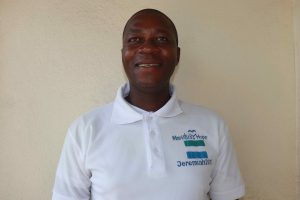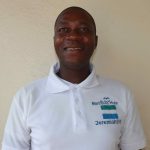May, 2022: Kamayea Community Well Rehabilitation Complete!
We are excited to share that a safe, reliable water point at Kamayea Community in Sierra Leone is now providing clean water to neighboring community members! We also conducted hygiene and sanitation training, which focused on healthy practices such as handwashing and using latrines.

Community children splash water at the well.
"I feel blessed this water point is accessible to all and sundry in my village," said 17-year-old Mohamed K.

Mohamed, center, pours water at the rehabilitated well.
"The water is clean and safe to drink. Now I will no longer walk far distances to go in search of water. I can get access to clean and safe water in my community at any time of the day I need water to use. I am happy for such goodness, and I believe this will bring a turnaround in my life."

Mohamed splashes water with some young ladies from the community.
"I will have enough time to prepare for school and sufficient time to rest and enough time to study at home," Mohamed concluded. "I will now practice better hygiene. This new well will provide enough water for me to bathe on time and do other domestic work."
"Before this time, I used to face challenges in my village to access clean and safe water," said 28-year-old trader, Mariatu Kargbo. "But now, the new water point is accessible to me. It is close to my house, and I can access it easily without walking [a] long distance or paying money. Therefore, the new water point will help me to save time in doing my household chores."

Mariatu collects water at the rehabilitated well.
"I will also be able to focus more on my trade than ever before. This is a significant impact because when there was no water facility in this community, I found it difficult to pay attention to my trade. By the time I finished fetching water from the stream, there would be limited time to sell to customers. This [well] will allow me to fetch [a] lot of water and then have enough time to prepare for my trade fare."

Mariatu (center, in the white shirt and beige printed skirt) celebrates water with community women.
We held a dedication ceremony to officially hand over the well to the community members. Several local dignitaries attended the ceremony, including representatives from the Port Loko District Council and the Ministry of Water Resources.
Each official gave a short speech thanking everyone who contributed to the rehabilitation of the water project and reminding everyone to take good care of it. Then, Mohamed and Mariatu made statements on their community's behalf. The ceremony began and ended with celebration, singing, and dancing in the local Temne language.
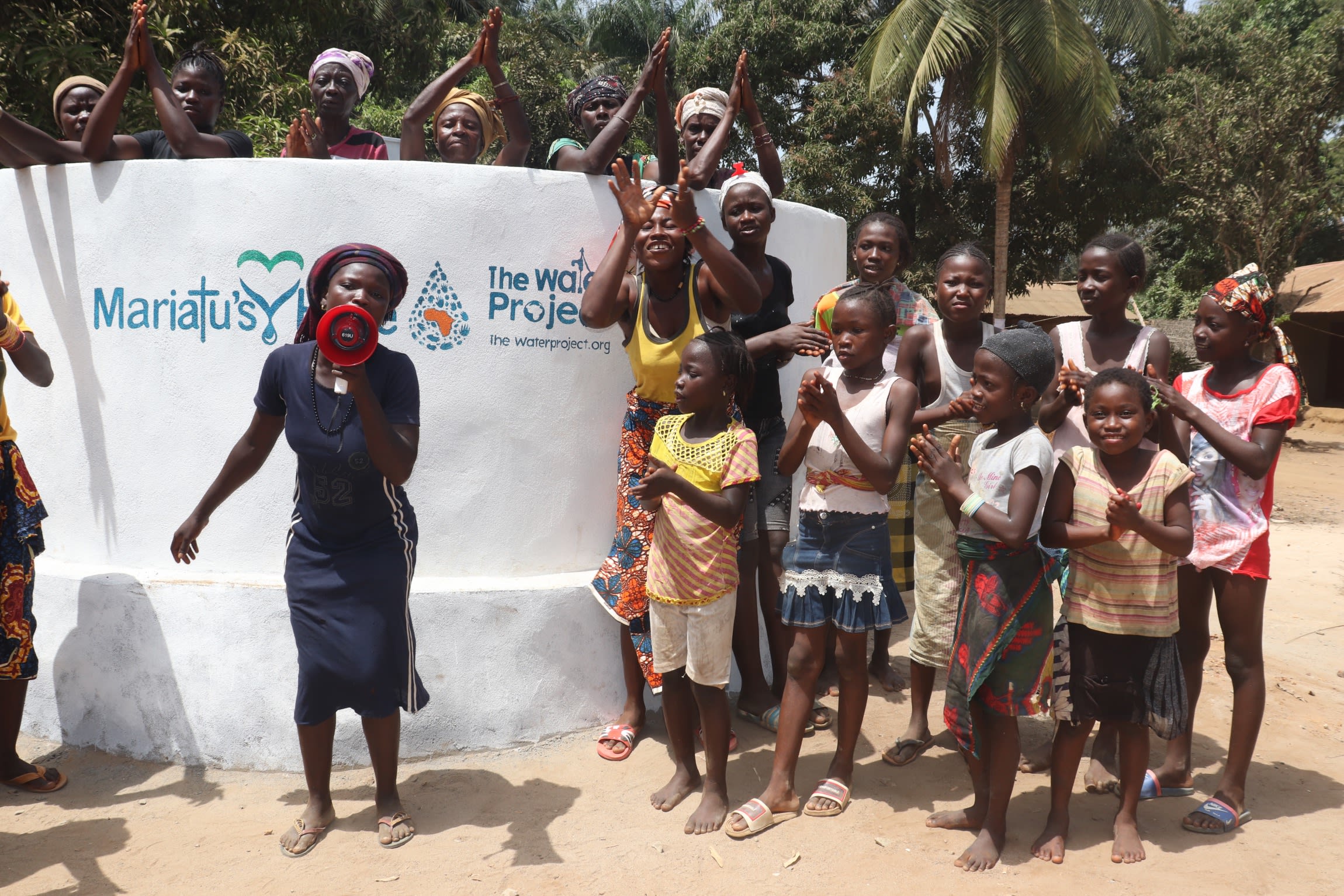
Singing at the dedication ceremony.
Clean Water Restored
The drill team arrived the day before beginning work. They set up camp and unpacked all their tools and supplies to prepare for drilling the next day. The community provided space for the team to store their belongings and meals for the duration of their stay. The following day, the work began.
First, we raised the tripod, the structure we use to hold and maneuver each drilling tool. Next, we measured the well's original depth. We then socketed the pipes and installed a casing.

Finally, we lined up the drill rods and started to drill! We reached a final depth of 21 meters with water at 15 meters. The hand-drill method allowed the team to install the cylinder far below the aquifer so that the community has excellent water access throughout the year.
With drilling complete, we installed screening and a filter pack to keep out debris when the water is pumped. We then cemented an iron rod to the well lining and fixed it with an iron collar at the top.

Yield test underway.
Next, we bailed the well by hand for three days and flushed it, clearing any debris generated by the drilling process. Finally, we tested the yield to ensure the well would provide clean water with minimal effort at the pump.
As the project neared completion, we built a new cement platform, walls, and drainage system around the well to seal it off from surface-level contaminants. The drainage system helps to redirect runoff and spilled water to help avoid standing water at the well, which can be uncomfortable and unhygienic and a breeding ground for disease-carrying mosquitoes.

The new well pad under construction.
At last, we installed the stainless steel India Mk11 pump and conducted a water quality test. The test results showed that this is clean water fit for drinking!
New Knowledge
Before conducting any hygiene training, we called and visited the local water user committee to understand the community’s challenges and lack of sanitation facilities. We shared the findings from our discussions with the committee members to help them make the necessary adjustments before the training began. For example, we identified households without handwashing stations or ones that may need to repair their latrines. With this information, community members worked together to improve hygiene and sanitation at home.
After this preparatory period, we scheduled a time when members from each household using the water point could attend a three-day hygiene and sanitation training. We then dispatched our teams to the agreed-upon location to hold the meeting, which was under a mango tree close to the rehabilitated well.

A training facilitator and woman discuss one of the visual aids.
Training topics covered included handwashing and tippy taps, good and bad hygiene habits, disease transmission and prevention, COVID-19, worms and parasites, dental hygiene, proper care of the well's pump, keeping the water clean, the cost recovery system, dish racks and clotheslines, the importance of toilets, keeping latrines clean, balanced diets, the diarrhea doll, and HIV and AIDS.

Community members discuss examples of poor hygiene.
One of the more memorable moments of the training was during the lecture on proper care and maintenance of the rehabilitated well. Two young girls in the community who had come to fetch water from the new well started fighting over who had gotten there first. The chief of the village, Pa Foday, who was attending the training, used the occurrence as an example of why implementing some rules for fetching water would be so important.
"We have a role to play as parents and elders of this village to bring about laws to monitor and control the pump," he said.
"The new water point will promote good hygiene in this community," said Mariatu Kargbo, one of those quoted earlier.
"Honestly, we have been practicing bad hygiene because of ignorance and the lack of clean water. But now, I personally will be able to wash my hands well before eating and after using the toilet. I will be able to clean my house and latrine well due to the availability of water. All this will prevent me from [getting] diseases I use to experience due to poor hygiene."

A training facilitator shows the rubber worm and parasite to community members.
Another topic that stirred up a lot of interest was worms and parasites. When we showed examples of what these can look like and explained the symptoms of a parasitic infection, one woman named Aminata realized that she may have suffered from a hookworm infestation after all the time she spent walking without shoes on bare soil. She said when she went to the community's local witch doctor, she had been told that her symptoms were the result of witchcraft. However, after further discussion, she decided she would go to the local health clinic after our training.

Lamin on the day of the training.
"The training was valuable to me because I am now able to learn the different aspects of hygiene such as handwashing, covering food, and [the] avoidance of open defecation," said Lamin Kamara, a 47-year-old farmer.
"This new knowledge received will prevent me from unnecessary diseases I used to suffer from," he continued. "I will also take this new knowledge to my household, for us to put into practice the hygienic principles we have learned. This will enable us to be safer from getting diseases that can easily [be] transmitted."
When an issue arises concerning the well, community members are equipped with the necessary skills to rectify the problem and ensure the water point works appropriately. However, if the issue is beyond their capabilities, they can contact our field officers to assist them. Also, we will continue to offer them unmatchable support as a part of our ongoing monitoring and maintenance program.
Thank you for making all of this possible!

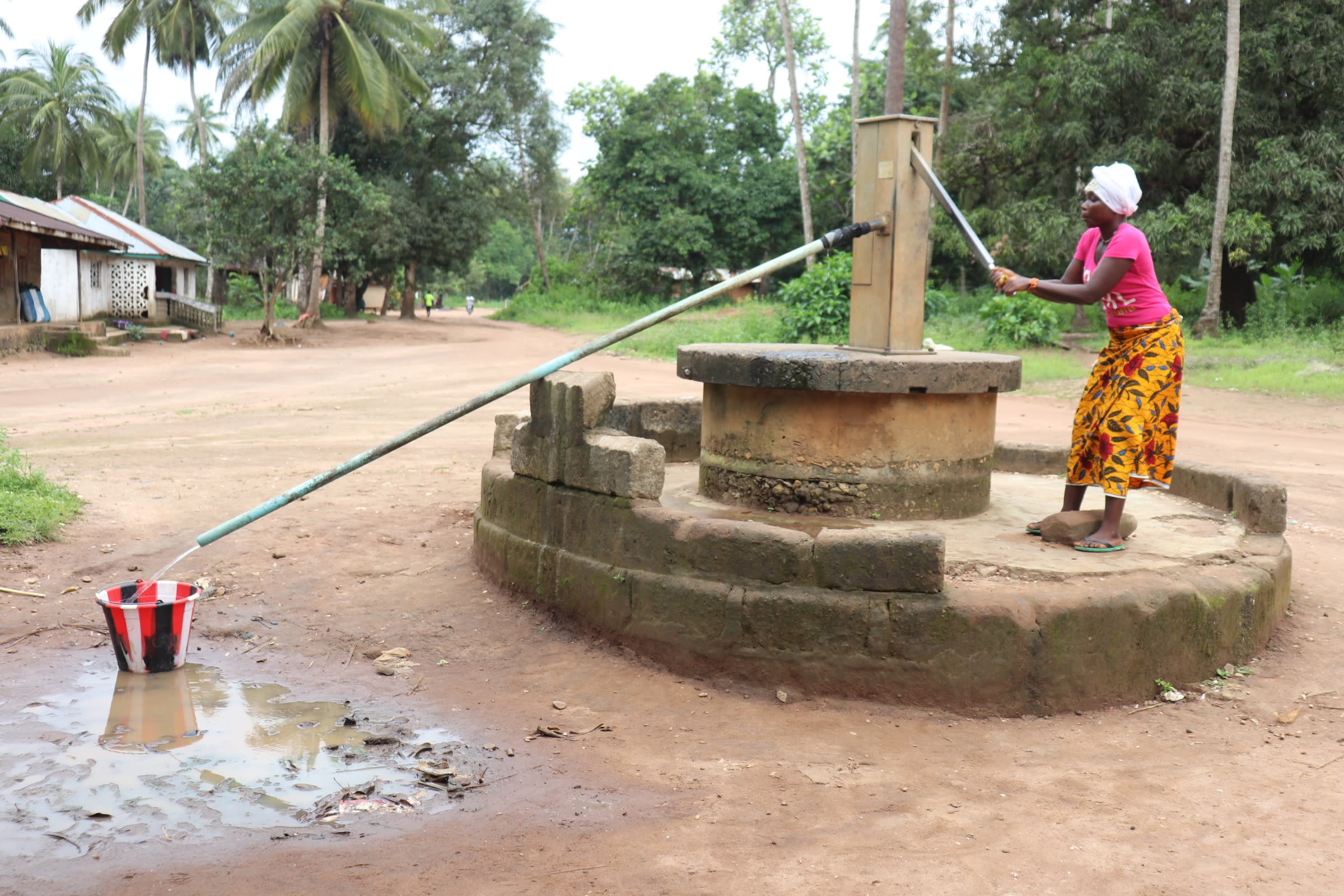
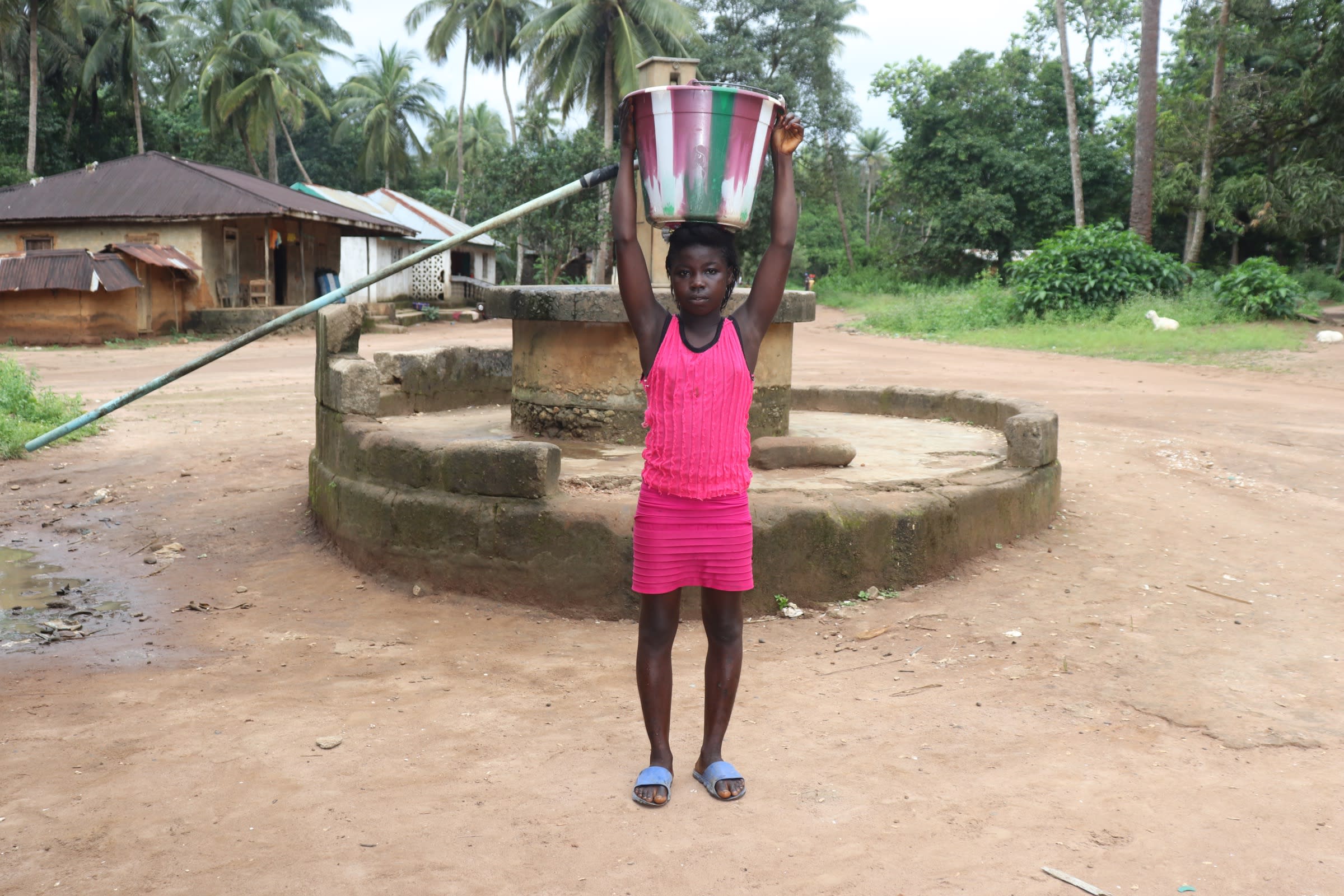

 Borehole Well and Hand Pump
Borehole Well and Hand Pump









